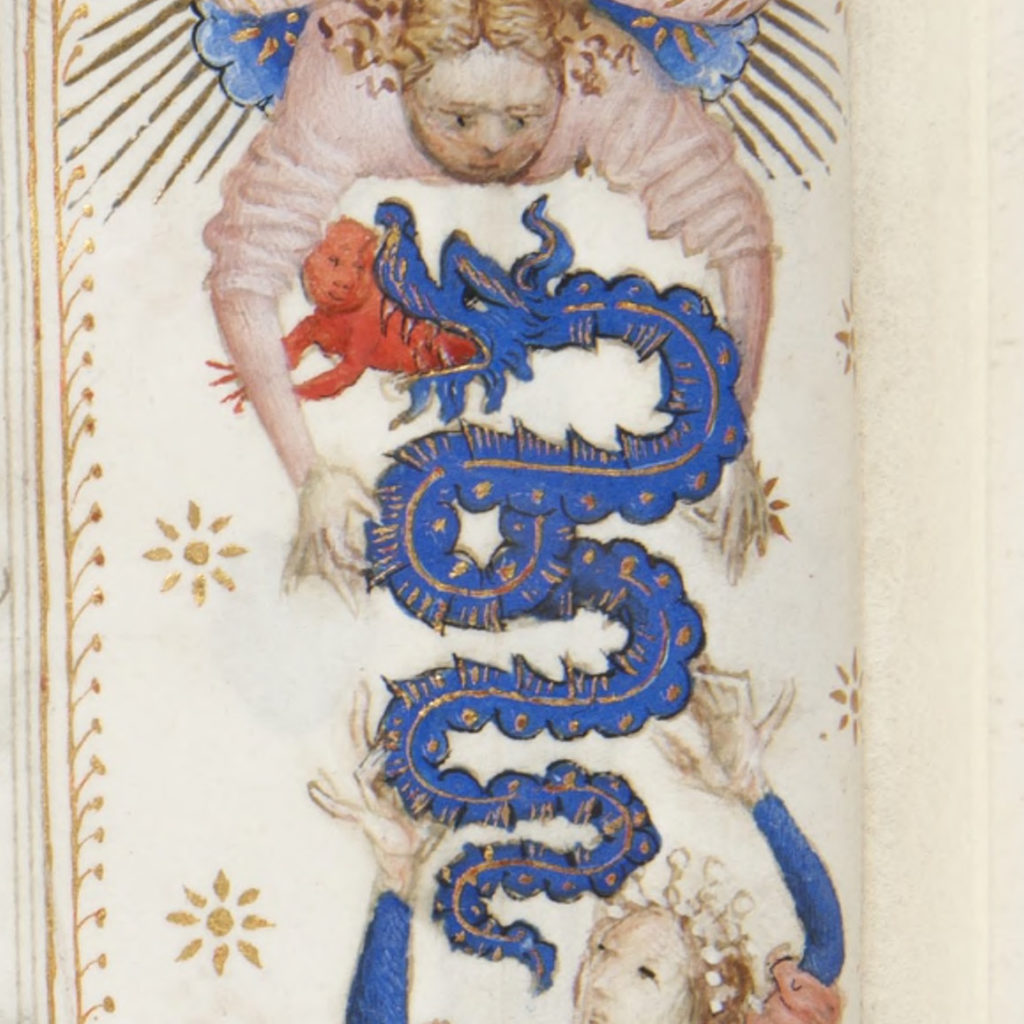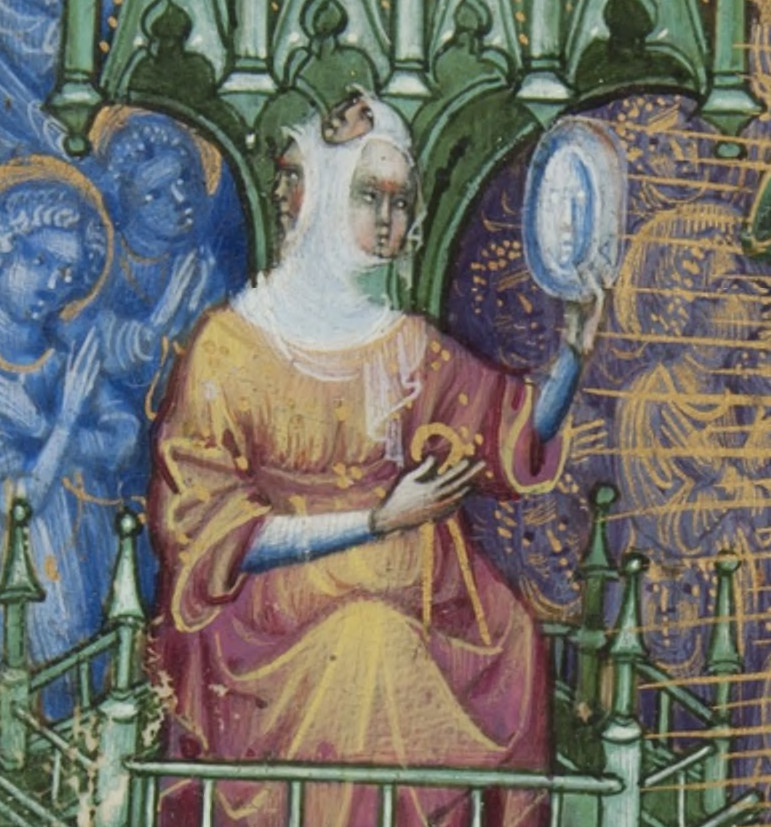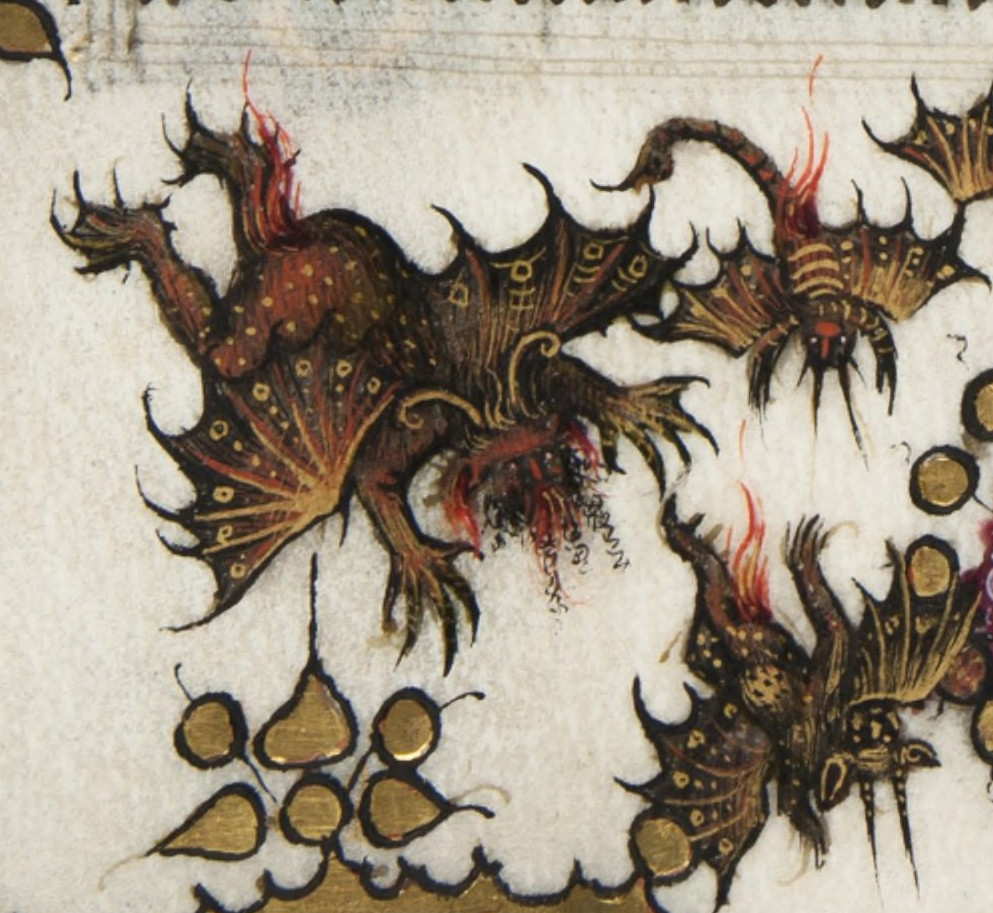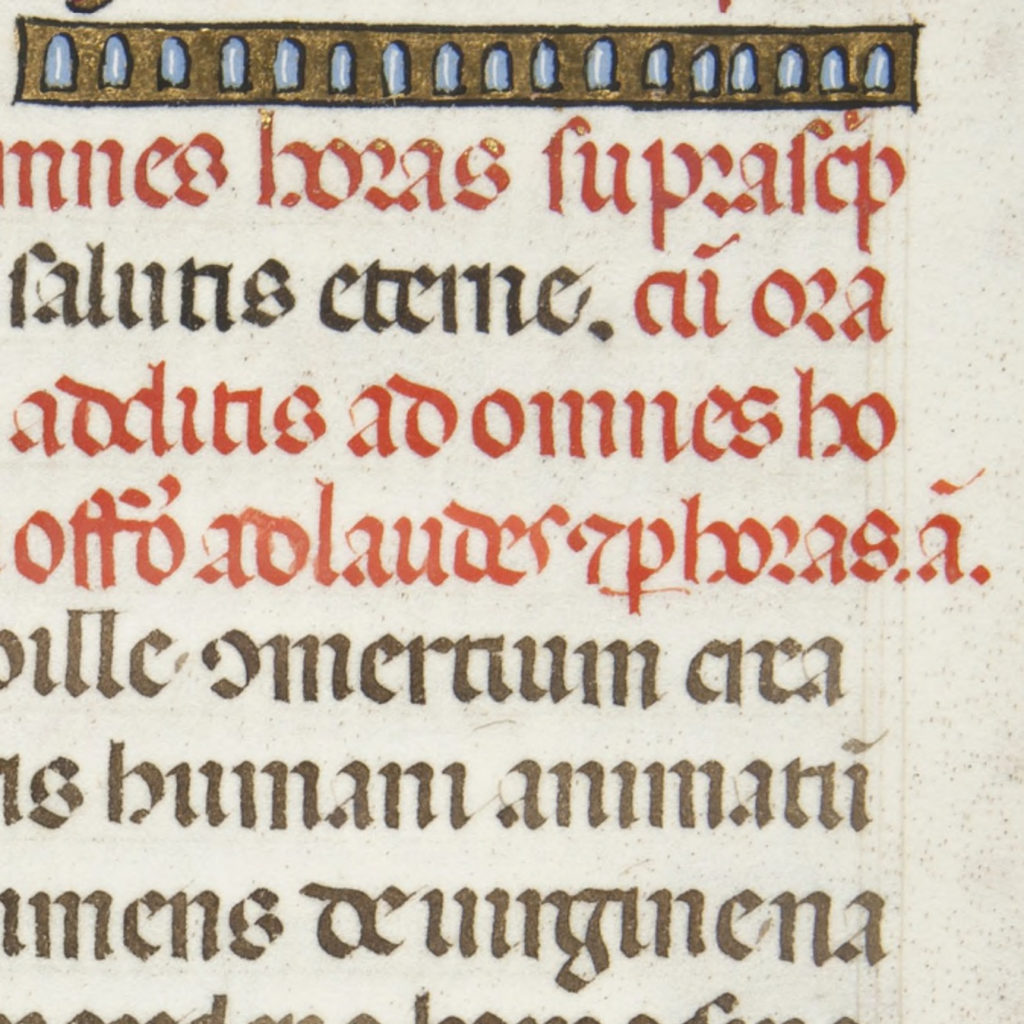You may have heard of the Book of Hours of the Duke of Visconti, a beautiful Italian manuscript from the late 14th century.
You may even have studied fragments of it, whether it be the magnificent rotunda gothic of the text or the countless elements of decoration and illumination.
But do you really know it?
What is this snake that seems to be holding a child in its mouth?

What does the word dompne mean in the last line? And does a scribe make a lot of mistakes in copying?

Who is this “woman” with three faces?

Where are the beautiful capital letters (including the Y) in this manuscript?

Who are these fiery characters?

What do all these abbreviations mean?

to answer all these questions and many more, you can register for my zoom conference on February 13 at 6pm (replay available for a week) by clicking here













